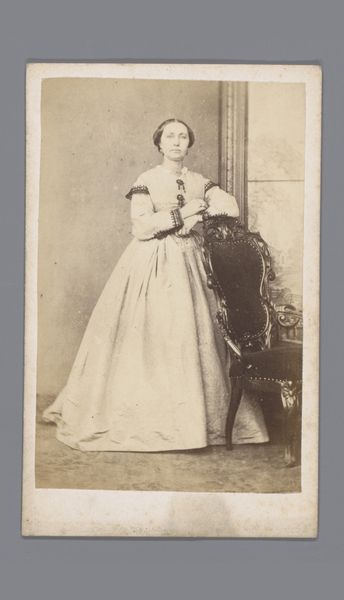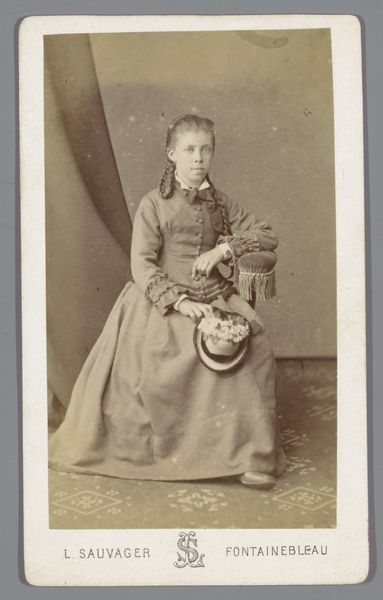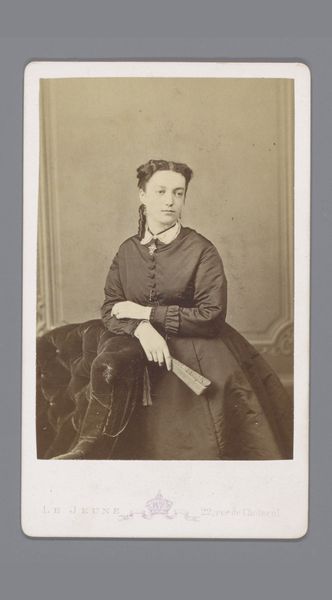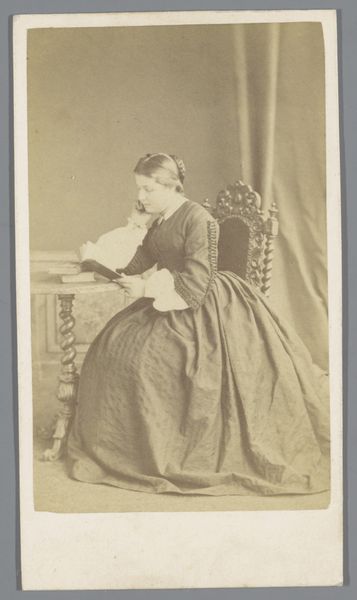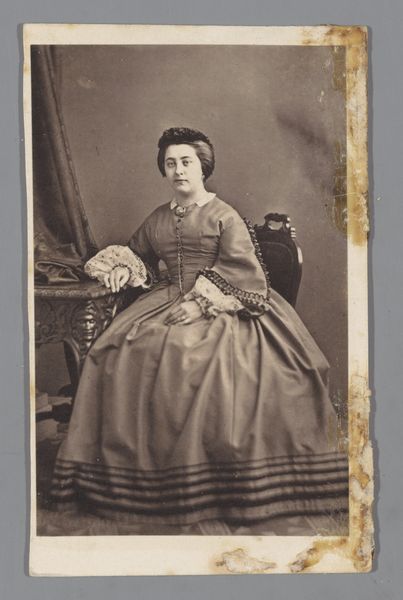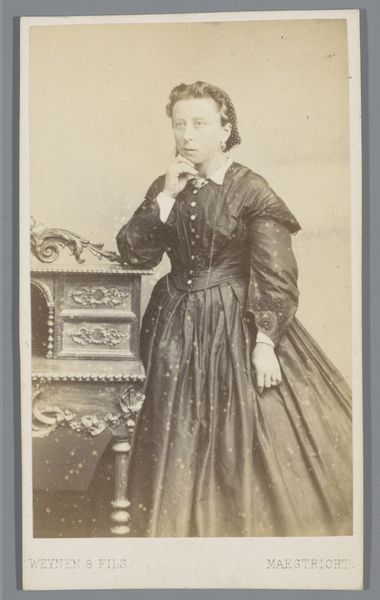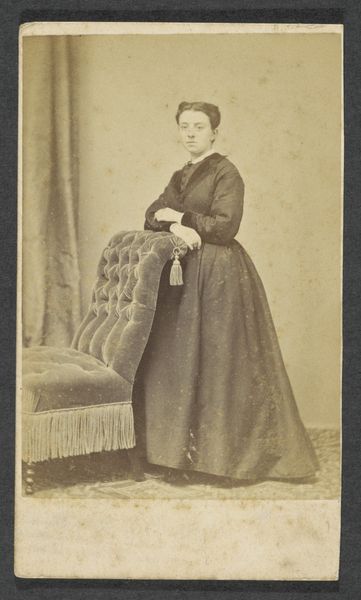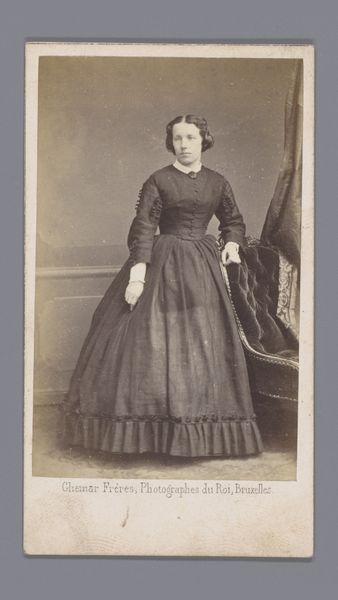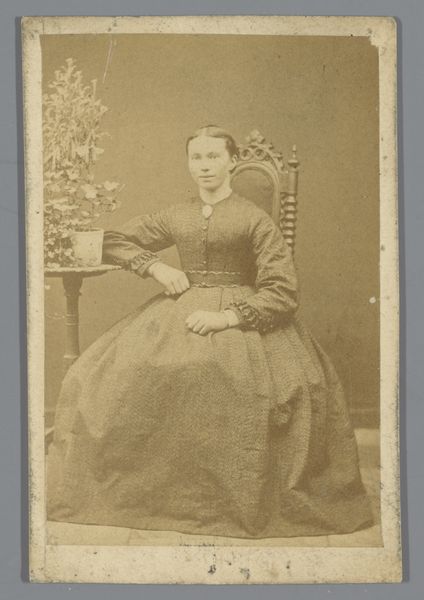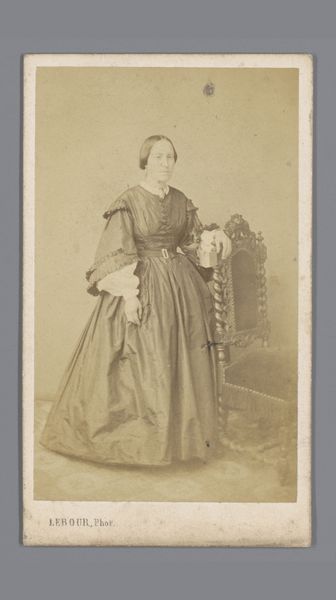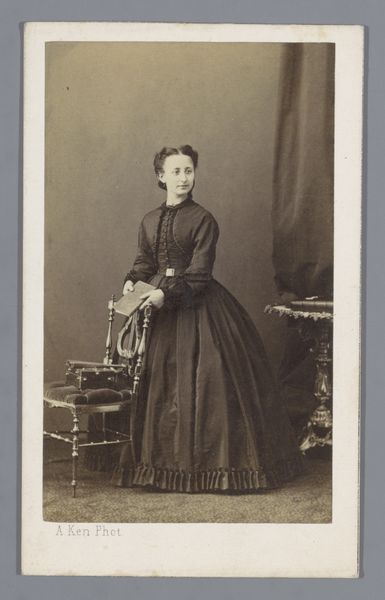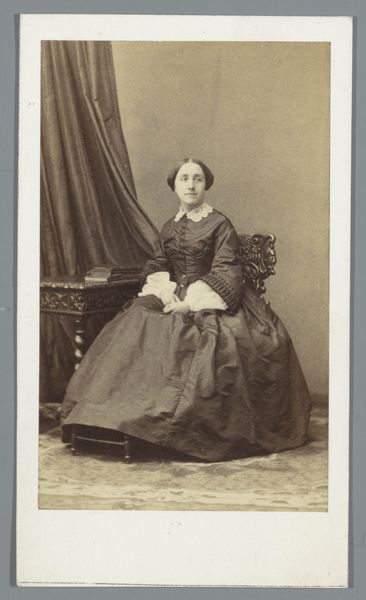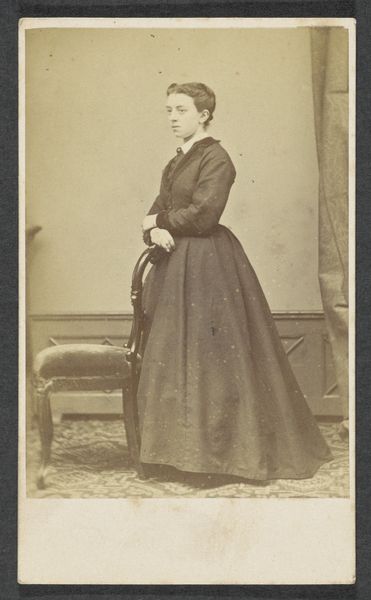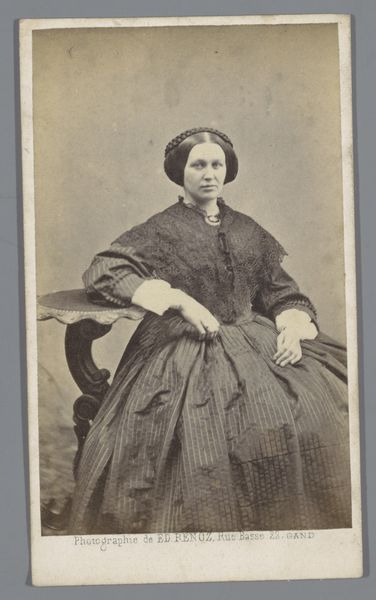
Portret van een onbekende vrouw en een onbekend kind rondom een tafel 1861 - 1874
0:00
0:00
photography, gelatin-silver-print
#
portrait
#
photography
#
gelatin-silver-print
Dimensions: height 105 mm, width 61 mm
Copyright: Rijks Museum: Open Domain
Curator: The formality is striking. A composed but almost melancholic image; sepia tones enhancing a kind of stillness. Editor: This is a gelatin-silver print by Albert Greiner, taken between 1861 and 1874. It’s entitled "Portrait of an Unknown Woman and an Unknown Child around a Table," and it resides here at the Rijksmuseum. The fascinating thing about photography at this stage is the relationship to the rising middle class. Photography was a trade and very commercially driven. Curator: The structural rigidity contributes to this perceived somberness. Consider the composition: The woman seated, anchoring the frame, and the child, almost secondary, his hand resting somewhat tentatively on her shoulder. The way the light catches the folds of her dress! Editor: And that dress tells us so much. The patterns, the probable fabric—these things speak to the sitter's social standing. Photography democratized portraiture, but fashion maintained its role as signifier. The materiality of that gelatin-silver print would have been considered extremely modern, mass produced for its audience. Curator: Do you not feel though, the weight in the symmetry? How both subjects evenly inhabit their space and are posed perfectly within their environment? The very texture, which appears almost soft, is highly appealing to the sense of sight and enhances the overall effect. Editor: Of course, but for a new middle class who wants the same products as the elite, this mass reproduction would mean more than it does now. Each card likely served a very direct and material purpose, from sharing to maintaining familial bonds. Each print a product of very human means and social needs. Curator: The very symmetry seems to defy time—to declare this a scene of a specific beauty and moment that is simultaneously beyond definition yet defined by the shapes we can see before us. Editor: It’s amazing to think about the role labor, materials, and production had during the mass uptake of photographic printing during this period and how crucial it was in visualizing and cementing our material culture today. Curator: Ultimately, the subjects—and the work in which they are captured—stand forever. Editor: Cemented by materiality, literally and figuratively.
Comments
No comments
Be the first to comment and join the conversation on the ultimate creative platform.
